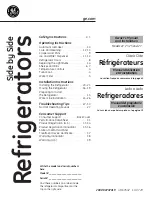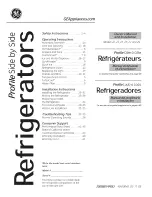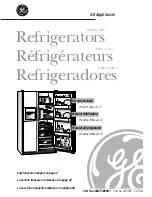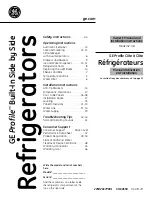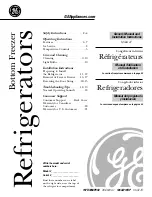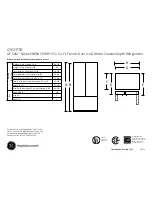
31
4.7 LOW SIDE PUMP DOWN
This procedure can be used to perform replacement
on refrigeration parts on the low side of the
refrigeration system. (refer to diagram below). It can
also be used to check compressor capacity, internal
leaking of valve plates and the hot gas solenoid valve.
1.
Install gauge service hoses on low-pressure
and high-pressure ports.
2.
Remove service valve cap from liquid
receiver tank. Install separate set of gauges
3.
Turn unit on and let unit run in cool mode for
minimum of 5 minutes.
4.
Front-seat receiver tank valve, this will start
the pump down of the low side
5.
Pump down the low side to a 25in vacuum.
6.
Stop the unit. Low side pressure should
remain below a 15in vacuum for 2 minutes
or more.
If pressure rises:
•
to zero and stops - indicates low side
refrigerant leak to the atmosphere.
•
above zero - indicates refrigerant boiling
out of the refrigerant oil or internal high-
pressure to low-pressure area leaks.
Repeat pump down (steps 1-6) up to 3 times. If after
the third attempt, pressure still rises, check the
following components:
1.
Hot Gas solenoid valve (Unit will also not
cool correctly)
2.
Compressor valve plate. (Unit will have
Low head pressure)
Proceed to service refrigeration on the low- pressure
side of the system. After service is done. Proceed to
leak check and evacuate the system. After evacuation,
back-seat the receiver tank valve.
4.8 CHECKING THE REFRIGERANT CHARGE
If the unit has an insufficient charge of refrigerant, the
evaporator will be “starved” and the box temperature will
rise even though the unit is operating. Also, an insufficient
charge does not circulate enough oil to properly lubricate
the compressor. The charge may be determined by
inspection of the refrigerant through the sight glass with
the following conditions established:
Testing the Refrigerant Charge with an Empty
Box:
1.
Place a test box over the evaporator.
2.
Install gauge manifold set.
3.
Run the unit in cool on engine driven
compressor operation until the thermostat
reads 32°F.
4.
Establish head pressure. It may be necessary
to partially cover the condenser grille on the
front of the unit to create the desired head
pressure.
5.
Look at the liquid line sight glass. Under
these conditions there should be no bubbles
in the flow of refrigerant through the liquid
line sight glass. Bubbles in the refrigerant
indicate the unit is low on refrigerant.
Testing the Refrigerant Charge with a Loaded
Box:
1.
Install a gauge manifold.
2.
Run the unit in cool on engine driven
compressor operation.
3.
Cover the condenser to drive any excess
refrigerant from the condenser into the
receiver tank.
4.
As the head pressure rises, check the liquid
line sight glass. There should be no bubbles
in the flow of refrigerant through the liquid
line sight glass. Bubbles in the refrigerant
indicate the unit is low on refrigerant.
Содержание Zer0 120
Страница 1: ...Zer0 120 0WSMZ120 Workshop Manual ...
Страница 15: ...8 Figure 1 Z120 Condensing Section Components ...































